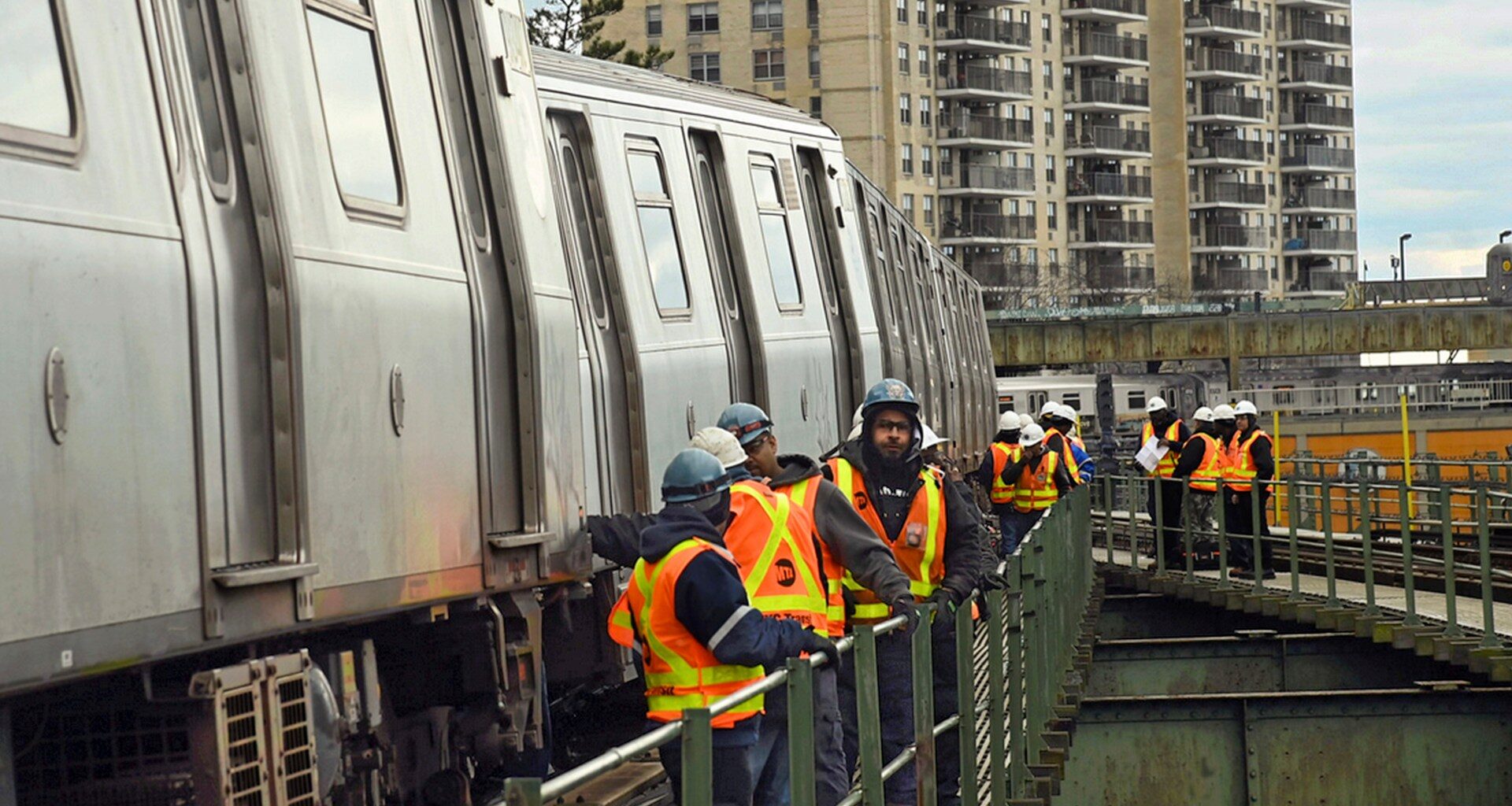The United States Department of Transportation has threatened to withhold up to 25 percent of federal transit funding from New York City’s Metropolitan Transportation Authority (MTA) over safety risks to its maintenance workers.
On Tuesday, the federal department announced it had issued a final warning to city officials, calling on the local government to conduct a third risk assessment and take steps towards remediation.
“I am disturbed by MTA’s failure to reinforce safety measures following serious accidents — one resulting in the death of a transit worker,” said Marc Molinaro, the head of the Federal Transit Administration (FTA) under President Donald Trump.
The warning was the latest tit-for-tat between the Trump administration and state and local officials over funding for public transportation.
It also marked another instance of the White House seeking to leverage federal money to ensure compliance with policy priorities.
Years-long question of safety
But the federal government’s complaint stretches back to the administration of President Joe Biden.
In August 2024, the transit administration issued a special directive (PDF) calling on the MTA, the nation’s largest transit system, “to take action to address an escalating pattern of safety incidents” involving its workers.
That directive followed the death of an MTA track worker, Hilarion Joseph, in November 2023. Joseph, a 57-year-old veteran, was struck by a northbound D train as he monitored the rails during a track cleaning.
Another MTA worker was seriously injured in June 2024.
Federal officials previously raised concerns about a sharp rise in “near-misses,” which increased 58 percent between 2022 and 2023 in the New York City transit system.
Tuesday’s final warning (PDF) gave the MTA a deadline of 30 days to submit a new comprehensive risk assessment of its Roadway Worker Protection programme, or else face consequences.
Failure to meet the deadline could result in the Trump administration issuing “restrictions or prohibitions” to address worker safety, as well as withholding 25 percent of the MTA’s federal funding.
“The New York MTA has a decades-old pattern of exposing workers to harm’s way,” Transport Workers Union International President John Samuelsen said in a government news release.
“It is vital that the Federal Transit Administration hold the MTA accountable for its failures. Lives are in the balance.”
Tensions between Trump and New York
Questions of track safety are not the only point of tension between the Trump administration and New York City and state officials.
The Trump White House has previously threatened to redirect or revoke federal funding from the MTA over accusations that the system was crime-ridden.
In March, for instance, Transportation Secretary Sean Duffy issued a statement describing a “trend of violent crime, homelessness, and other threats to public safety on one of our nation’s most prominent metro systems”.
He called on New York City officials to “clean up” their transportation system and provide details about its plans to reduce crime.
“We will continue to fight to ensure their federal tax dollars are going towards a crime-free commute,” Duffy said.
Officials in Washington have also highlighted incidents of violence in the MTA system, including an incident where a woman was set on fire late last year as she rode a subway car.
Yet, MTA data shows that crime in the transit system was at its second-lowest level in 27 years, with major crime down more than 18 percent during the first quarter of 2025.
The Trump administration has also clashed with local officials over plans to implement “congestion pricing”: a system of tolls to reduce traffic in the often-clogged roadways of Manhattan.
Earlier this year, Trump pledged to leverage the Department of Transportation to “kill” the new tolls, prompting New York Governor Kathy Hochul, a Democrat, to denounce his actions as federal overreach.
“New York hasn’t laboured under a king in over 250 years, and we sure as hell are not going to start now,” Hochul said in February.
By May, a federal judge intervened to temporarily block the Trump administration from taking action against congestion pricing.
An election battleground
But New York remains a critical battleground for Trump and his Republican Party, particularly as they face hotly contested midterm elections in 2026.
Several parts of the state are considered “swing” districts that can tilt either Republican or Democratic.
This November, the city is also slated to hold a high-profile mayoral race, with the future of the MTA hanging in the balance.
The Democratic nominee, Zohran Mamdani, has made free buses a cornerstone of his campaign, building on a pilot programme he championed in the New York State Assembly that temporarily introduced no-fare routes in select neighbourhoods from 2023 to 2024.
Mamdani currently leads his closest rival, former Governor Andrew Cuomo, by 19 points, according to a Siena College poll (PDF) released on August 12.
Cuomo has proposed restructuring the MTA by shifting it from state to city control, a move he argues would give the mayor’s office greater oversight of transit operations.
